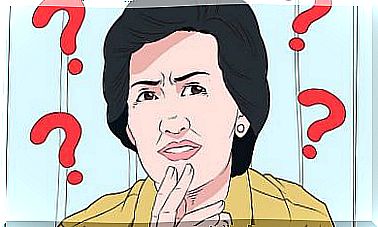World Parkinson’s Day: How To Spot Early Signs
World Parkinson’s Day is April 11th. This day invites reflection on the subject of this disease and encourages the implementation of actions to alert the population to the early signs of the disease.

World Parkinson’s Day has been around since 1997. The World Health Organization has established this day in recognition of the work of James Parkinson, an English neurologist who gave his name to the disease.
In 1817, James Parkison published the first work which spoke of Parkinson’s disease described as agitating paralysis. This work represents the beginning of scientific research on the disease.
The global prevalence of Parkinson’s disease is 0.3% among the general population, rising to 1% among people over the age of 60. This means that over the age of 60, 1 in 100 people may show symptoms of the disease.
This disease affects men more frequently than women. Science is still unclear as to the reason behind this observation, but estrogen may play an important protective role. At the moment, this is only a hypothesis.
One form of Parkinson’s disease affects young people, namely adults under the age of 40. This form of the disorder is caused by a mutation in a gene. It affects about 5% of people affected by the disease.
Parkinson’s disease, what is it?
Parkinson’s disease may be a well-known disease, but World Parkinson’s Day is important. This day helps disseminate important information about the disease and make it more visible. This is important since it is a relatively common disease.
Parkinson’s disease is a process of neuronal degeneration. This is a negative change that occurs in the nervous system. This change is gradual: the situation worsens over time.
Neurodegeneration first affects movement. The main symptom of the disease is tremor. We will see a little later in this article what are the other symptoms to be aware of.
People with the disease have changes in the neurons in the substantia nigra, an area of the brain. Changes in these neurons decrease the amount of dopamine in the body. Since dopamine is a neurotransmitter that sends signals within the nervous system to coordinate movement, this explains why the disease primarily affects movement.
World Parkinson’s Day promotes early signs of the disease
This year, several organizations linked to the disease have offered to take advantage of this day to disseminate the early signs of the disease. This day allows some people to find out early enough that they are suffering from the disease and those who already have it to have more tools.
As we said above, the tremor is the symptom par excellence of the disease. This symptom usually affects the extremities, especially when the person is at rest. But there are other symptoms:
- A smaller writing
- Lack of control over movements causes the person to write differently: their handwriting is generally smaller
- Movements in full sleep
- Spontaneous movements at night, or even punching, can be an early sign of Parkinson’s disease if it happens repeatedly
- Altered smell
- People with the disease often lose their sense of smell
- The constipation
- The alteration in neuronal transmission also affects the intestine and its network of neurons which regulates defecation rhythms. Constipation can therefore indicate the disease
- The lack of expressions
- The face is not spared from neuronal degeneration. Typically, a person with the disease loses their body language and facial expressions such as laughter or sadness, which is why the face is compared to a mask.
- A change in the volume of the voice
- The voice becomes hoarse or loses volume. This is explained by an alteration in the transmission of the vocal cords and the movements of the sound box.
The diagnosis

If the objective of World Parkinson’s Disease Day is to disseminate the early signs of the disease, it is to invite the population to consult a doctor in the event of the presence of the aforementioned warning signals. Early diagnosis allows for rapid initiation of supportive measures that will improve the patient’s quality of life.
The diagnosis is essentially clinical. There is no one-off study that can be carried out and provide immediate results. Only a neurologist can determine whether or not the disease is present.
The diagnostic process is sometimes completed with a special tomography that detects the presence of dopamine in the central nervous system. It is an aid to complete the diagnosis in case of doubt, but this examination is not always indicated.
A world day to detect the early signs of Parkinson’s disease
This year, World Parkinson’s Day focused on spreading symptoms that may go unnoticed. People over the age of 60 should pay particular attention to the above warning signs. These changes may indicate a neurological disorder. The earlier the diagnosis is made, the better the prognosis.








